Complete Solutions to Biomolecules of chapter BIOMOLECULES of Class 11 book with complete answers and questions
| Class 11 | BIOLOGY |
| Chapter | BIOMOLECULES |
| NCERT FINGERTIPS | Biomolecules |
| Number Of Questions | 100 |
| Academic Year | 2023-24 |
The four elements called "big-four" which make up 95% of all elements found in a living system are
01:18View SolutionRead the given statements and select the option that correctly sorts these with respect to A and B in the given flow chart.
(i) Molecular weight ranging from 18 to 800 daltons (Da) approximately
(ii) Proteins, nucleic acids, polysaccharides and lipids
(iii) Contain chemicals that have molecular weight more than 800 Da
(iv) Has monomers
(v) Generally has polymers
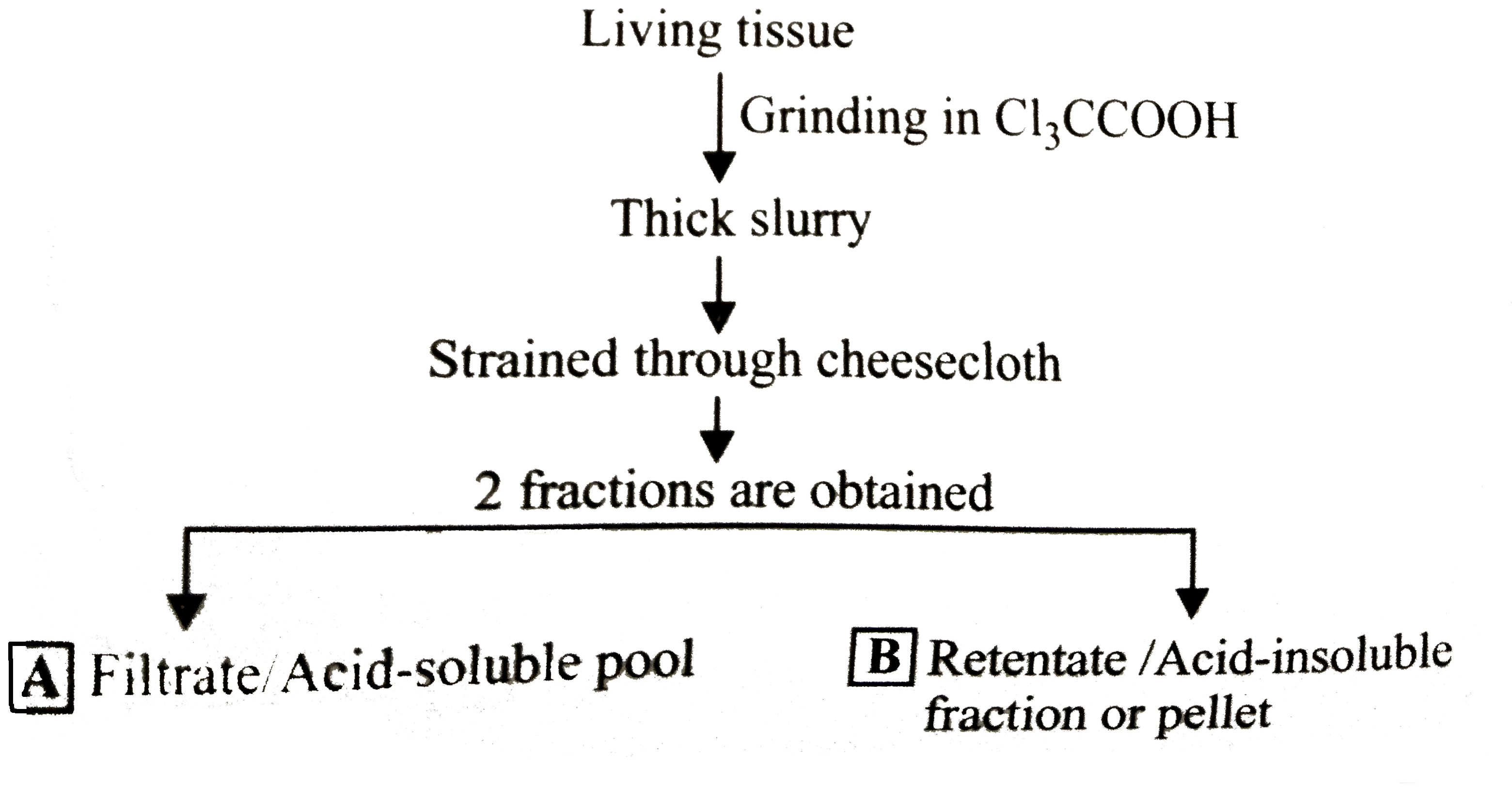 04:23View Solution
04:23View SolutionTake a living tissue, grind it in trichloroacetic acid using pestle and mortal, and then strain it, you would obtain two fractions : acid-soluble and acid-insoluble fraction. Acid-insoluble fraction does not contain
01:23View SolutionThe inorganic compounds like sulphate, phosphate, etc., are found in
02:14View SolutionThe sum total composition of acid-soluble and acid-insoluble fraction represents the entire composition of
01:40View SolutionBiomolecules are
01:12View SolutionBiological molecules are primarily joined by
02:56View SolutionHow many carbon atoms are generally used in composition of monosaccharides ?
01:04View SolutionWhich of the following options correctly identifies the structural formulae shown in figure ?
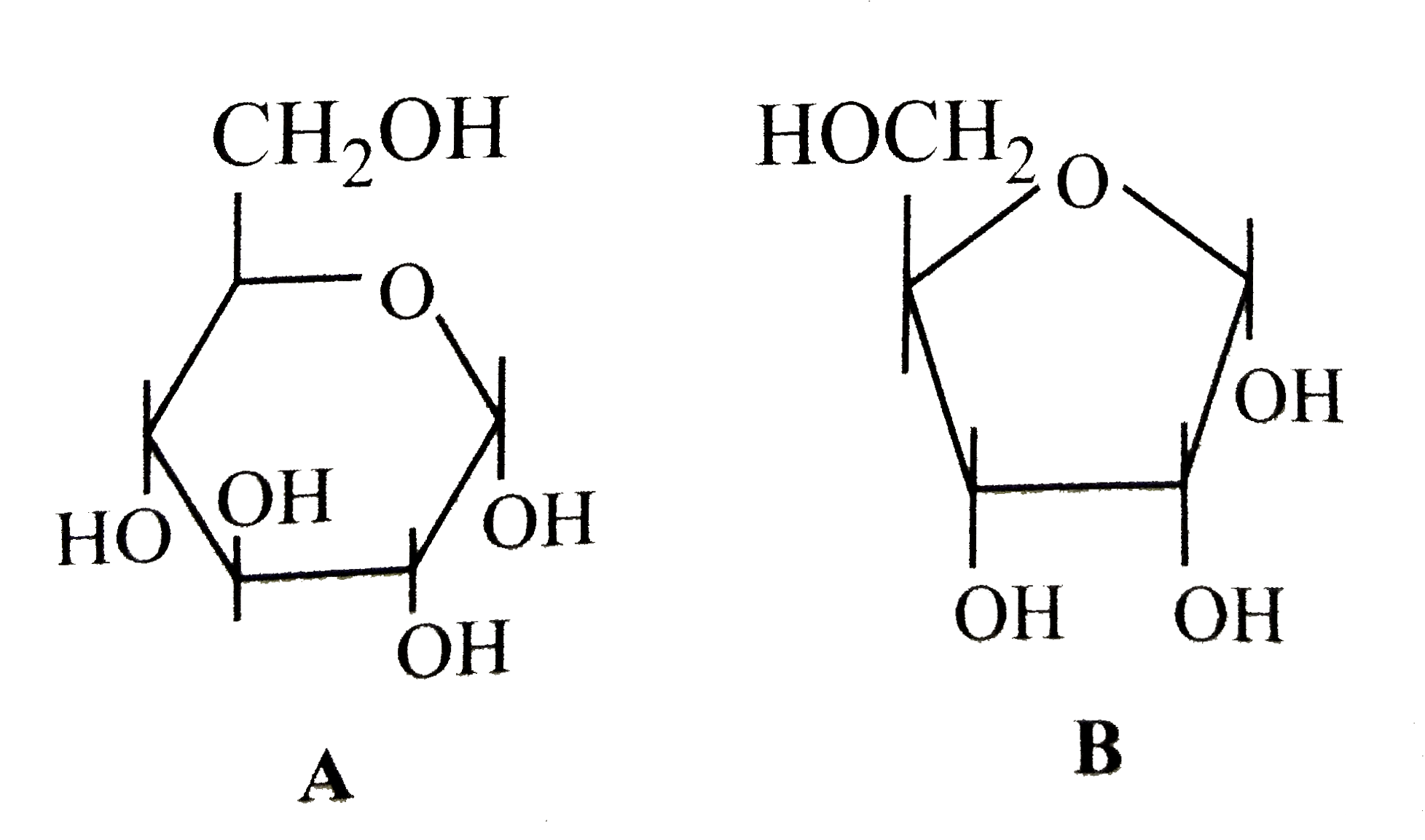 01:25View Solution
01:25View SolutionMatch column I with column II and select the correct option from the given codes.
`{:(" Column I",," Column II"),(A." ""Tetrose sugar",,(i)"Galactose"),(B. " " "Pentose sugar",,(ii)"Maltose"),(C." " "Hexose sugar",,(iii)"Erythrose"),(D" ""Disaccharide",,(iv)"Ribose"),(" ",, (v)"Sedoheptulose"):}`01:54View SolutionIdentify the amino acids given below and select the correct option.
 01:09View Solution
01:09View SolutionThe 20 different amino acids have different
00:59View SolutionWhich of the following is the correct match ?
02:19View SolutionAcidic amino acids have two-COOH groups and one `-NH_(2)` group per molecule. Select the pair that consists of acidic amino acids.
01:55View SolutionAn example of aromatic amino acid is
02:03View SolutionEssential amino acids include
02:05View SolutionWhich of the following statements about amino acids is incorrect ?
03:01View SolutionSaturated fatty acids possess _____bonds between carbon atoms and are ______ at room temperature.
02:07View SolutionWhich of the following is a saturated fatty acid?
02:02View SolutionTriglycerides are fatty acid esters of glycerol, which are formed by the esterification of ____ molecule (s) of fatty acids with ____ molecule(s) of glycerol.
02:01View SolutionWhich of the following is a triglyceride ?
02:26View SolutionGiven molecular formula belongs to which of the following groups of biomolecules ?
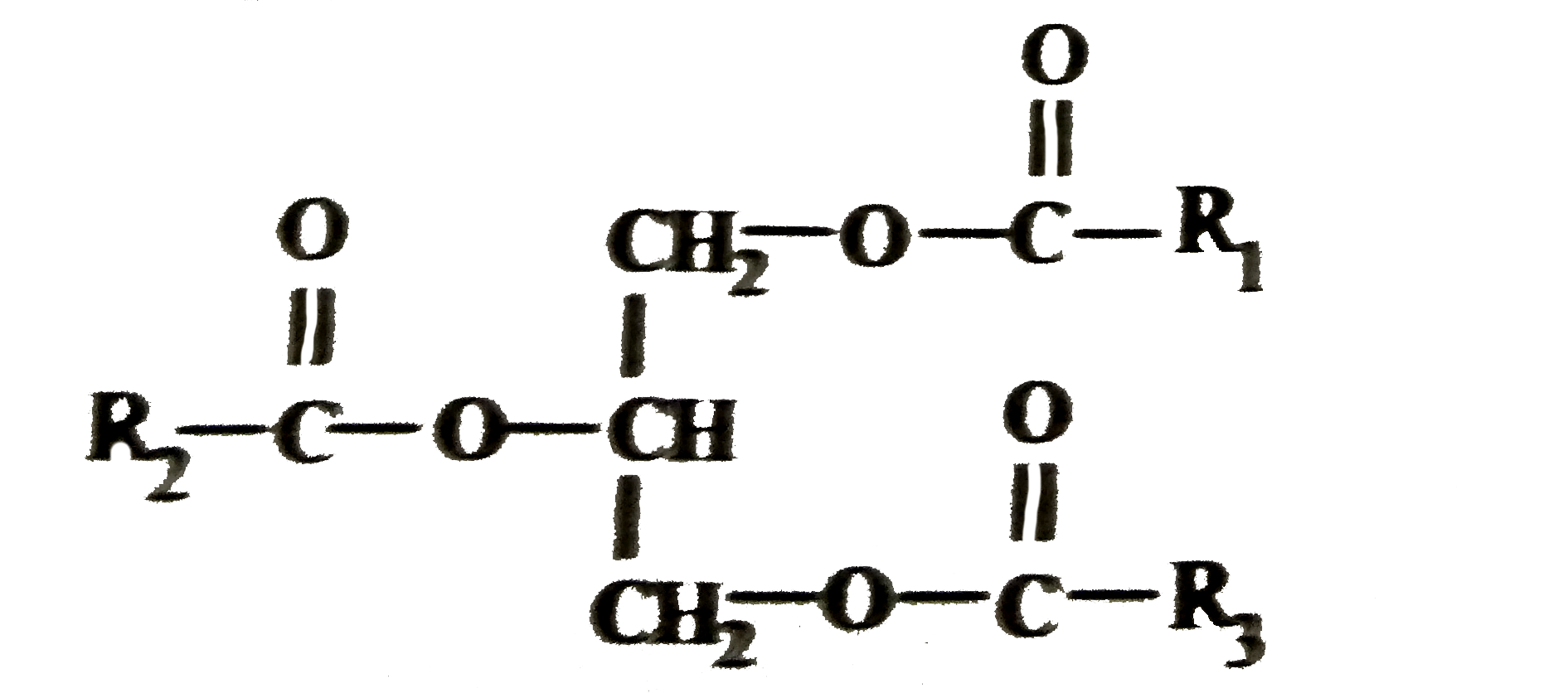 01:15View Solution
01:15View SolutionGiven structural formula is correctly identified along with its related function by which of the following options ?
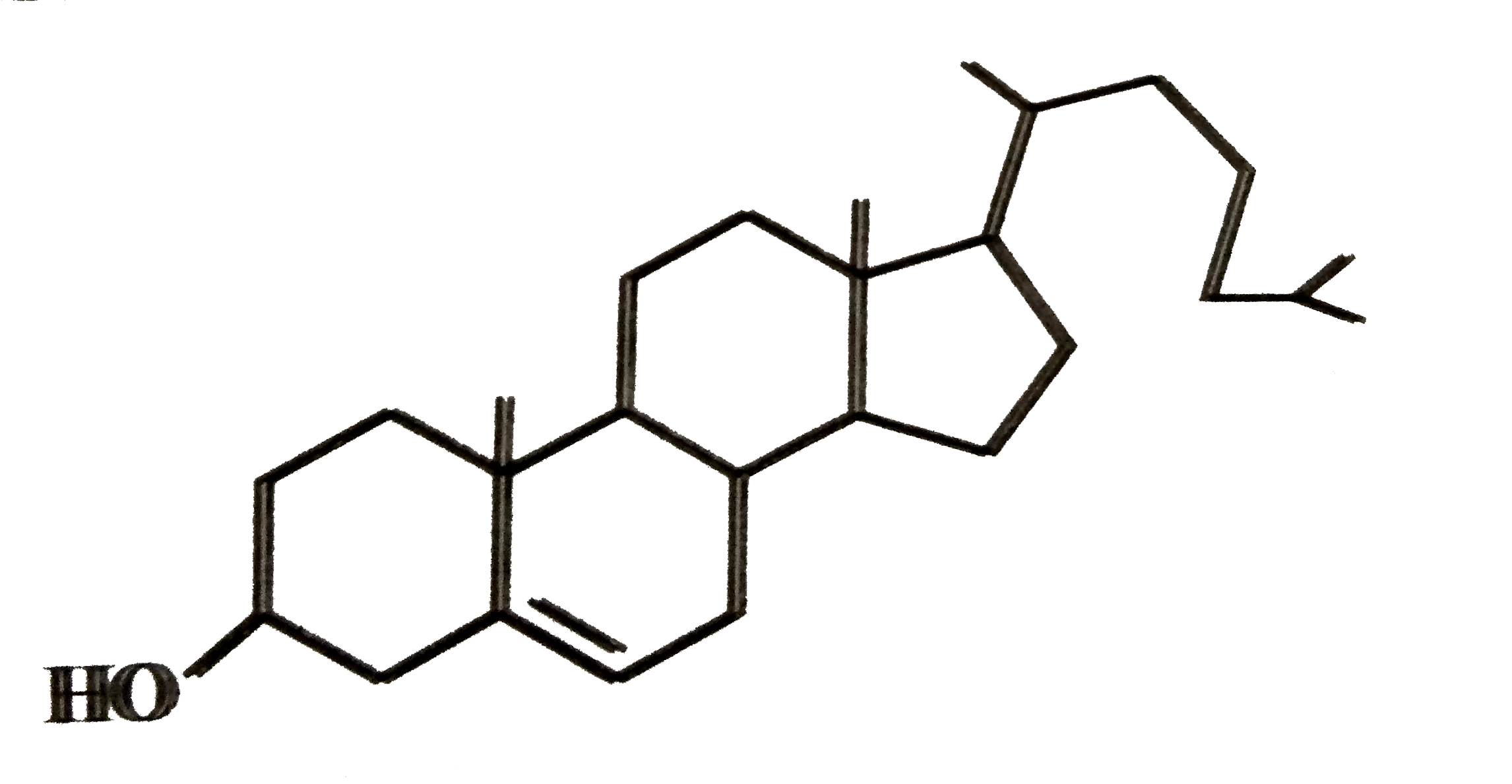 01:50View Solution
01:50View SolutionGiven structural formula is correctly identified along with its related function by which of the following options ?
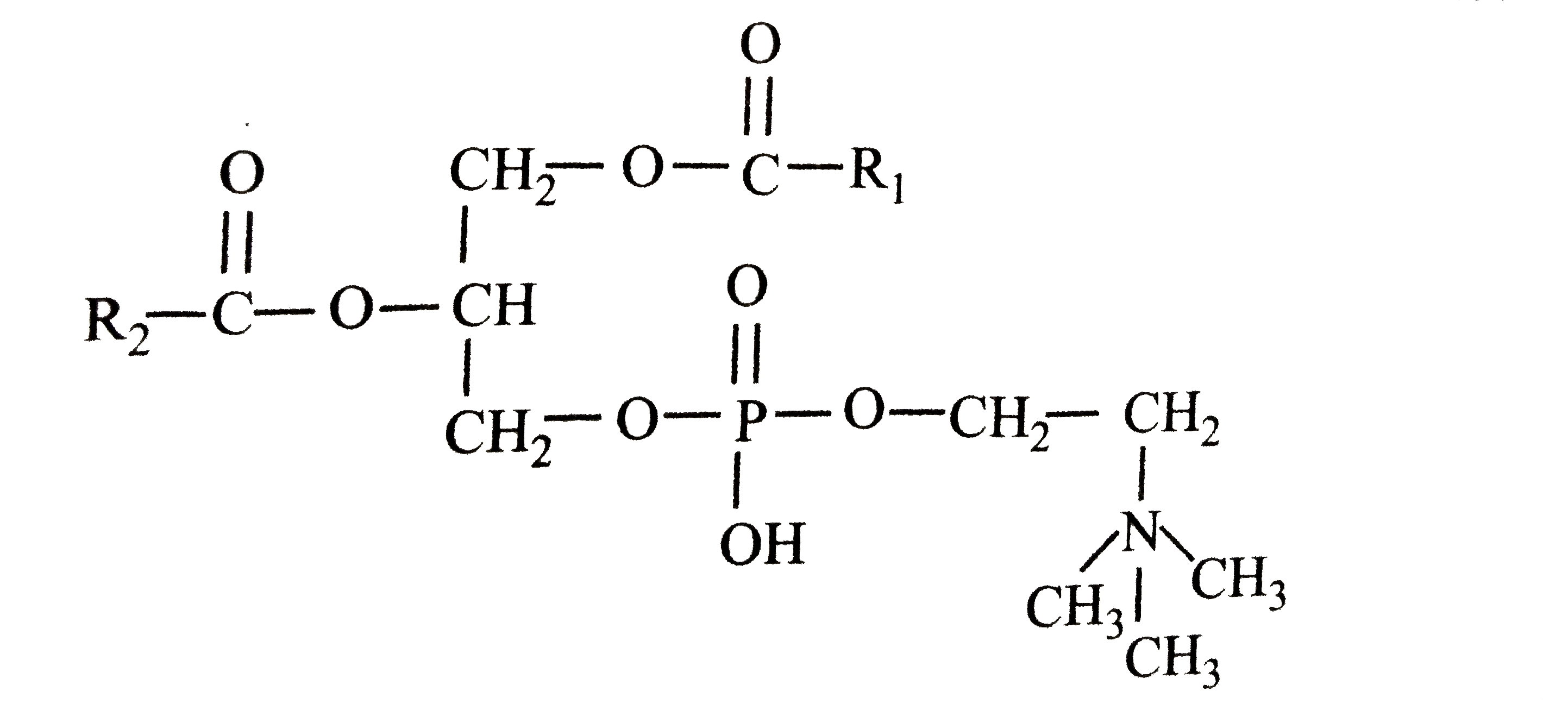 01:52View Solution
01:52View SolutionLecithin is a
02:16View SolutionAn unknown liquid collected from a sample of peas, is added to a beaker of water and is vigorously shaken. After few minutes, water and the unknown liquid made two separate layers. To which class of biomolecules, does the unknown liquid most likely belongs ?
01:58View SolutionThe component present in both nucleotides and nucleosides is
02:05View SolutionCytidine is a
03:17View SolutionRefer to the given reactions.
(i) Adenine `+X to `Adenosine
(ii) Adenosine `+Y to` Adenylic acid
What does X and Y represent here ?01:24View SolutionIdentify the given structural formulae and select the correct option.
 02:24View Solution
02:24View SolutionThe three structural formulae A, B and C are given here. Identify them and select the correct option.
 02:22View Solution
02:22View SolutionAdenosine, guanosine, thymidine, uridine, cytidine are all ____ but adenylic acid, guanylic acid, uridylic acid, cytidylic acid are _______.
01:46View SolutionMatch column I with column II and select the correct option from the given codes.
`{:(" Column I",," Column II"),("(Category)",,"(Secondary metaboliteis)"),(A."""Pigments ",,(i)"Concanavalin A"),(B."" "Terpenoides",,(ii)"Monoterpenes, diterpenes"),(C."" "Alkalods",,(iii)"Morphine, codeine"),(D.""" Lectins",,(iv) "Carotenoids, anthocyanins"):}`01:19View SolutionWhich of the following secondary metabolites are used as drugs ?
01:08View SolutionWhich of the following are alkaloids ?
03:03View SolutionSelect the incorrect match from the following .
03:02View SolutionStudy the given statements and select the correct option.
Carbohydrates, proteins, nucleic acids and lipids are primary metabolites.
Alkaloids, floavonoids, rubber, etc., are secondary metabolites.
Linoleic, linolenic and palmitic acids are the three essential fatty acids.01:47View SolutionMatch column I with column II and select the correct option from the given codes.
`{:(" Column I",," Column II"),(A." ""Galactose",,(i)"Protein"),(B." " "Anticoagulant",,(ii)"Phospholipid"),(C." " "Fructose",,(iii)"Brain sugar"),(D." ""Lecithin",,(iv)"Heparin"),(E." Insulin ",, (v)"Fruit sugar"):}`01:09View SolutionThe correct order of chemical composition of living tissues/cells in term of percentage of the total cellular mass is
01:06View SolutionMatch the column I with column II and choose the correct combination from the options given.
`{:(" Column I",," Column II"),("(Component)",,"(% of the total cellular mass)"),(A."""Ions ",,(i)"1"),(B."" "Lipids",,(ii)"2"),(C."" "Carbohydrates",,(iii)"3"),(D."""Nucleic acids",,(iv)"5-7"),(E."""Proteins",,(v) "10-15"):}`02:12View SolutionMatch column I with column II and select the correct option from the given codes.
`{:(" Column I",," Column II"),(A."""Glut ",,(i)"Intercellular ground substance"),(B."" "Antibody",,(ii)"Enzyme"),(C."" "Collagen",,(iii)"Hormone"),(D."""Trypsin",,(iv)"Fights infectious agents"),(E."""Insulin",,(v) "Enables glucose transport in cells"):}`02:42View Solution______ is the most abundant protein in animal world and _____ is the most abundant protein in the whole biosphere.
01:01View SolutionWhat will be the molecular formula of a polypeptide consisting of 10 glycine when the formula of glycine is `C_(2)H_(5)O_(2)N_(5)` N ?
03:07View SolutionRead the given statement and select the option that correctly identifies X and Y.
In a glycogen molecule, successive glucose units are joined together by X and branches are linked together by Y.02:43View SolutionThe polysaccharides made up of glucose monomers are
01:38View SolutionStudy the given statements and select the correct answer.
(i) Cellulose is a homospolymer of glucose.
(ii) Inulin is a homopolymer of fructose.
(iii) Starch gives blue colour and glycogen gives red colour with iodine solution.
(iv) Cellulose gives no colour with iodine solution.00:57View SolutionStudy the given statements and select the correct answer.
(i) Right end of a polysaccharide chain is called reducing end while left end is called non-reducing end.
(ii) Starch can hold cellulose being non-helical, cannot hold iodine.
(iii) Starch and glycogen are branched molecules. (iv) Starch and glycogen are the reserve food materials of plants and animals, respectively.01:55View SolutionWhich of the following is a heteropolymer ?
01:44View SolutionWhich of the following statements is not correct regarding chitin ?
00:57View SolutionRead the given statements.
(i) Fructose is the sweetest sugar.
(ii) Glycine is the simplest amino acid.
(iii) Lactose is a disaccharide composed of one molecule each of glucose and galactose.
(iv) Cellulose is an unbranched chain of glucose molecules linked by `beta-1`, 4-glycosidic bond.
Which of the given statements are correct ?01:28View SolutionIn a DNA molecule, the phosphate group is attached to _______ cabon of the sugar residue of its own nucleotide and _____ carbon of the sugar residue of the next nucleotide by _________ bonds.
02:23View SolutionPurines have nitrogen atoms at _____ positions.
02:01View SolutionPyrimidines have nitrogen atoms at _____ positions.
01:25View SolutionB-DNA which is right -handed double helix contains ______ base pairs per turn of the helix and each tum is _____ long .
02:16View SolutionWhich of the following is an incorrect match ?
03:32View SolutionWhich of the two groups of the given formula is involved in peptide bond formation between different amino acids ?
 02:40View Solution
02:40View SolutionPrimary structure of proteins is due to the presence of
02:12View SolutionIdentify X and Y in the given sequence.
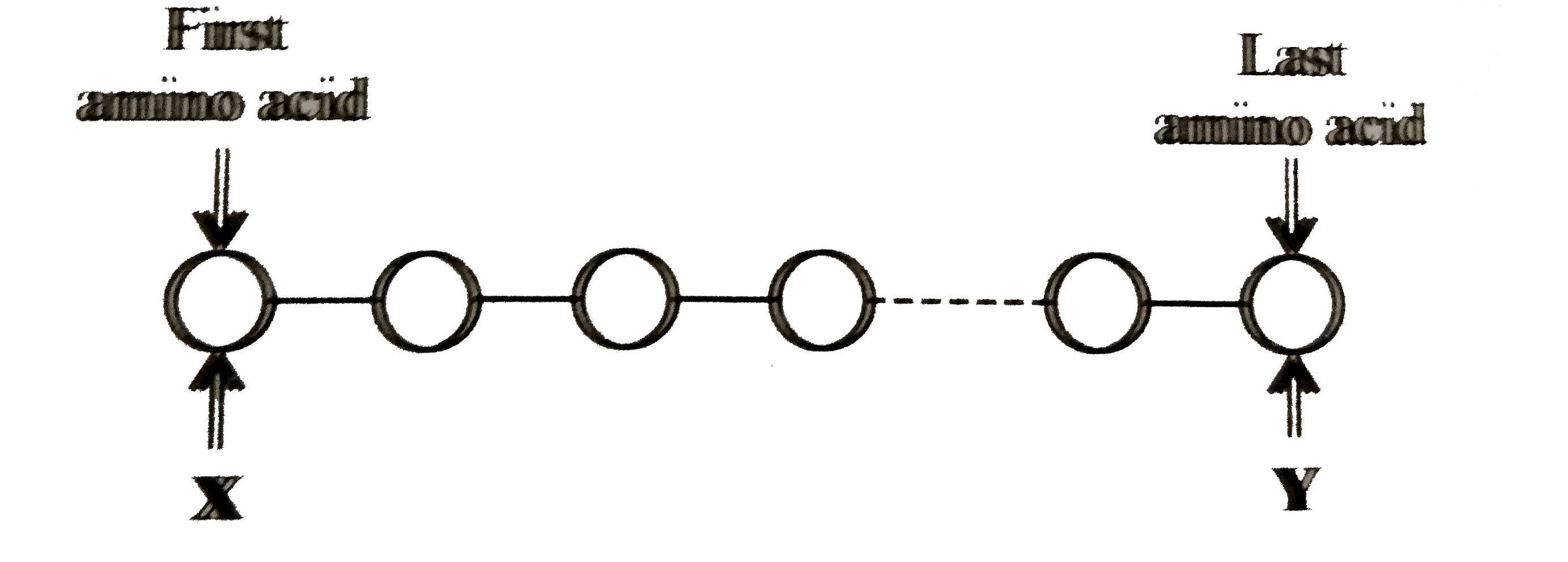 01:48View Solution
01:48View SolutionAt some points a protein molecule may be folded back on itself. This called _____ structure and folds or coils are held together in place by _______.
02:04View SolutionAn `alpha`- helix is the example of which type of protein structure ?
00:55View SolutionA `beta`-pleated sheet organisation in a polypeptide chain is an example of
01:41View SolutionRefer to the given figure.
Formation of structures A and B could be due to
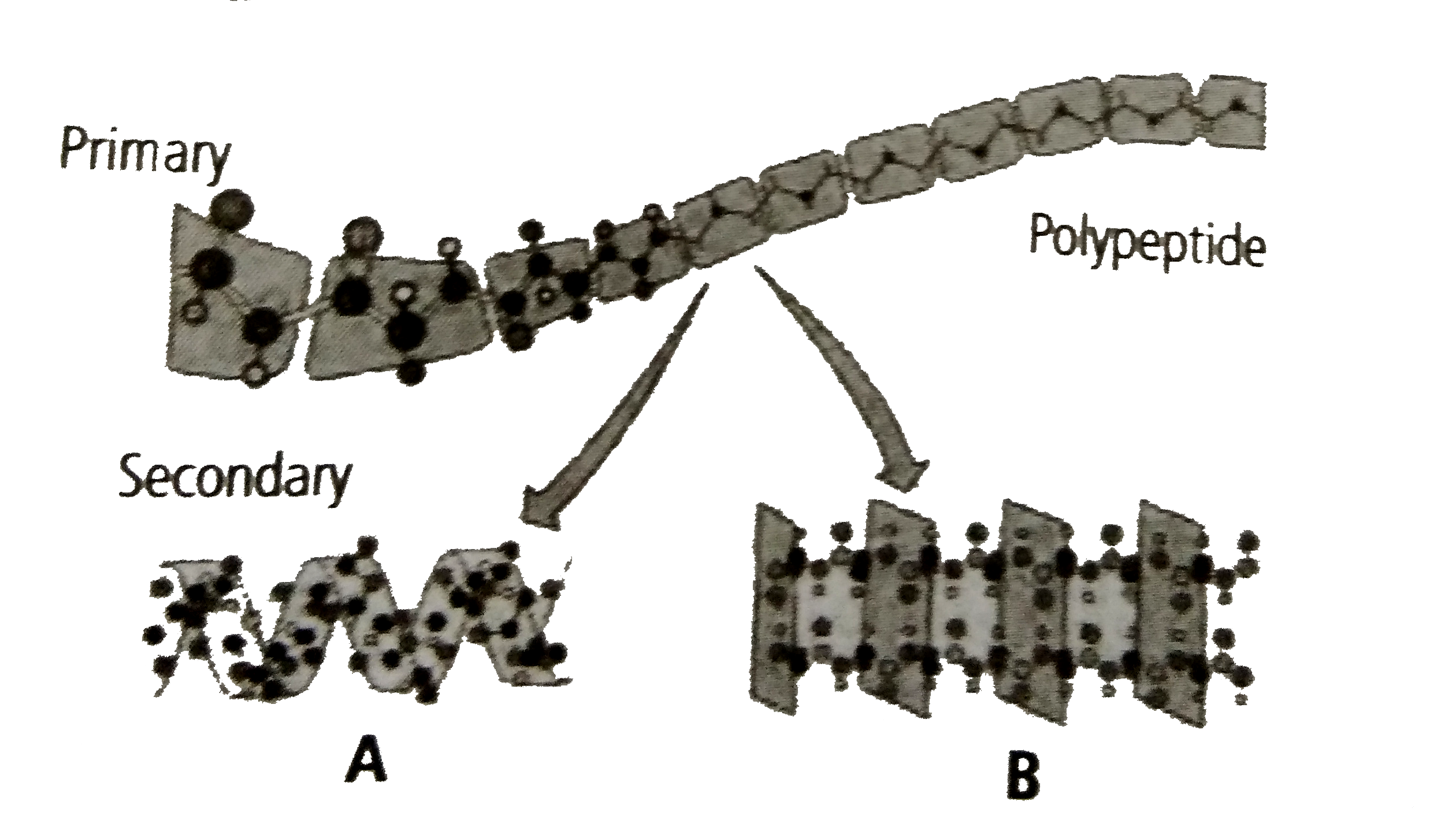 01:21View Solution
01:21View SolutionRecognise the figure and find out the correct matching.
 02:27View Solution
02:27View SolutionAdult human haemolgobin consists of
02:50View SolutionRead the given statements and select the correct option.
Statement 1 : Haemoglobin is an example of quatemary structure of proteins.
Statement 2 : Haemoglobin molecule is composed of four polypeptide chains-two`alpha`-chains and two `beta`-chains.02:39View SolutionKeratin present in hair shows secondary structure known as
01:30View SolutionSelect the option that correctly identifies the chemical bonds present in the given biomolecules.
Polysaccharides-A, Proteins-B, Fats-C, Water -D03:18View SolutionWhat does A represent in the given diagram of a nucleotide ?
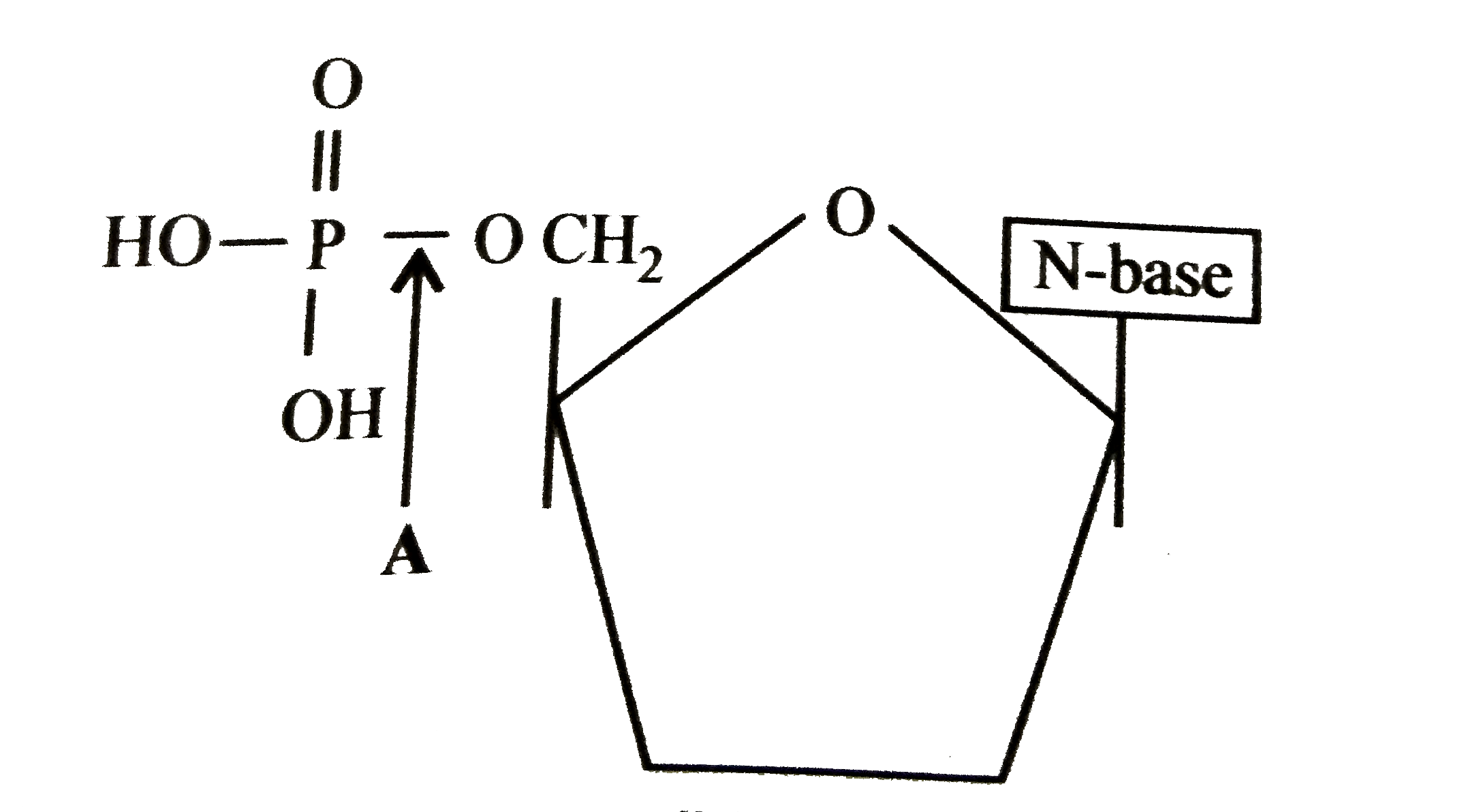 01:36View Solution
01:36View SolutionWhich bonds are indicated by X and Y in the given diagram ?
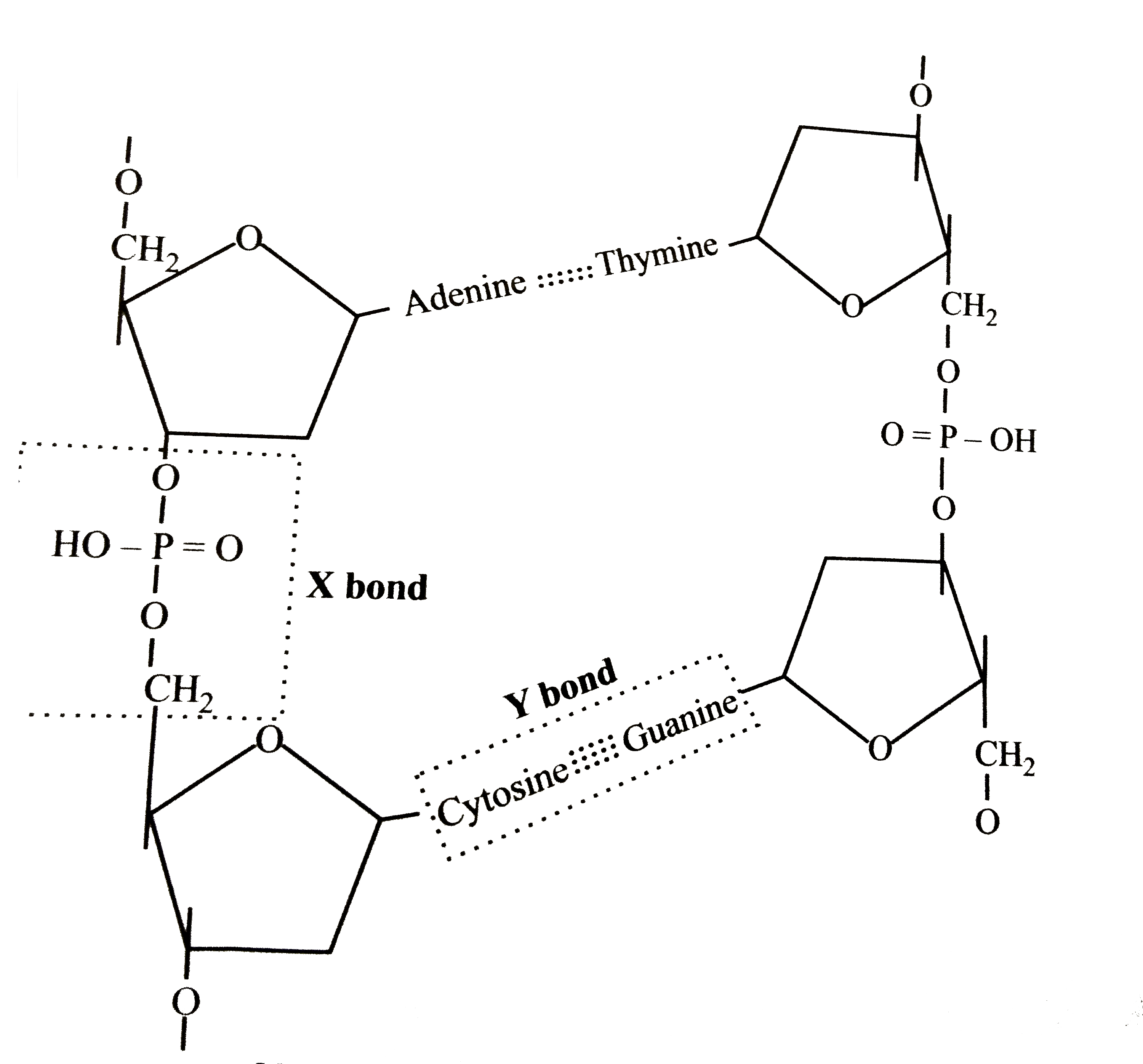 03:39View Solution
03:39View SolutionRead the following statements and select the correct option.
Statement 1 : All biomolecules have a turn over.
Statement 2 : One type of biomolecule changes into some other type of biomolecule.01:48View SolutionThe regulation by an organism of chemical composition of its blood and body fluids and other aspects of its internal environment so that physiological processes can proceed at optimum rates is called
00:57View SolutionThe proteins which hasten the rate of a given metabolic conversation are called
01:32View SolutionIn an enzyme, active sites/pockets/crevies are present on
01:08View SolutionEnzymes catalyse the biochemical reactions by ____ the activation energy.
03:09View SolutionRead the given statements and select the correct option.
Statement 1 : Low temperature destroys enzymes by causing their denaturation.
Statement 2 : High temperature preserves the enzymes in their inactive state.01:54View SolutionRead the given statements and select the correct option .
Statement 1 : Ribozymes are RNA molecules which catalyse the synthesis of certain specific RNAs and removal of introns from mRNA.
Statement 2 : Ribozymes are proteinaceous enzymes.03:01View SolutionWhat is denoted by X and Y in the given graph ?
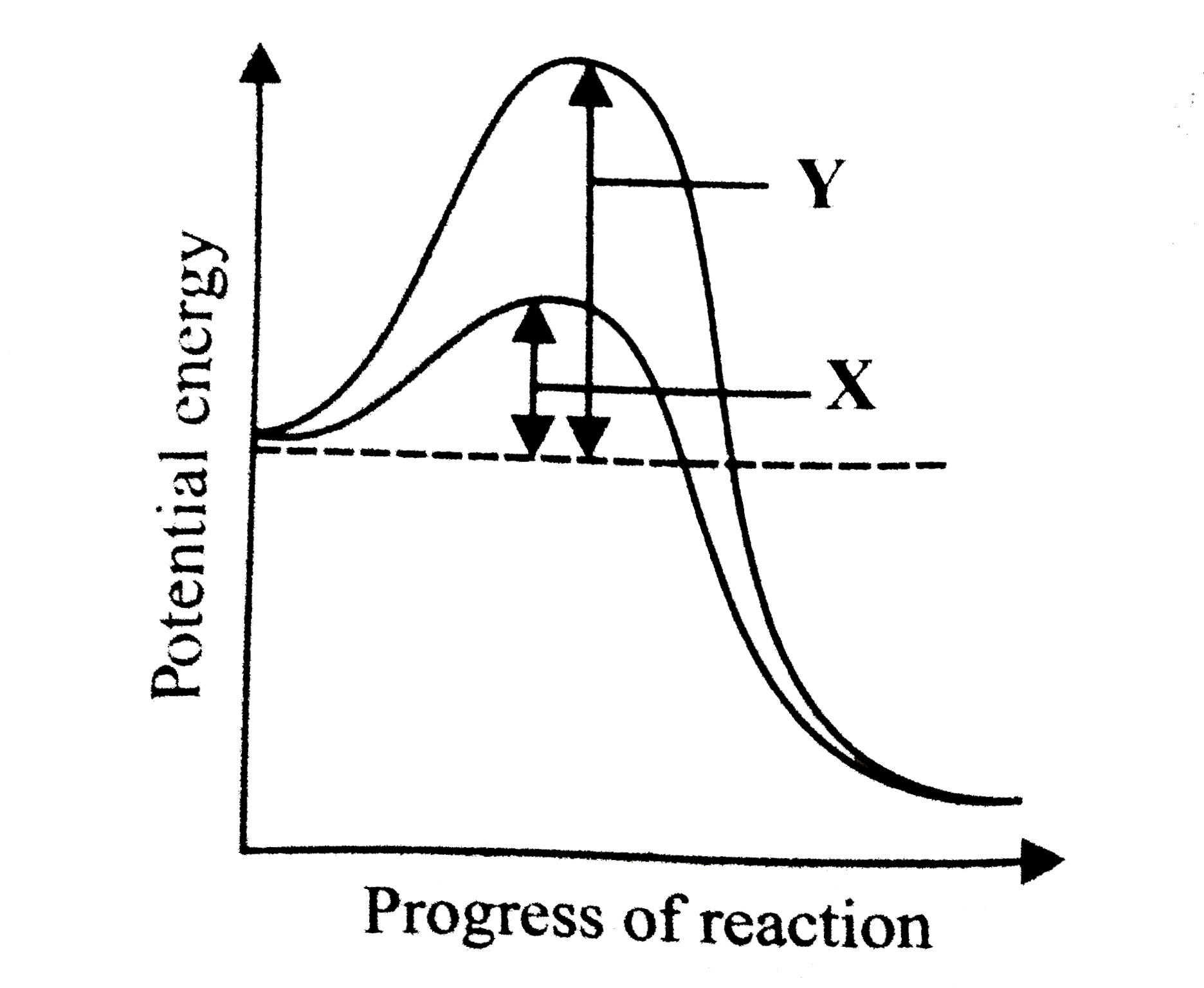 02:13View Solution
02:13View SolutionWhich of the following statements is incorrect regarding enzymatic activity ?
02:05View SolutionWhich of the following statements about enzymes are correct ?
(i) Enzymes do not alter the overall change in free energy for a reaction.
(ii) Enzymes are proteins whose three dimensional energy.
(iii) Enzymes speed up reactions by lowering activation energy.
(iv) Enzymes are highly specific for reactions.
(v) The energy input needed to start a chemical reaction is called activation energy.03:28View SolutionSelect the right option regarding the given graph.
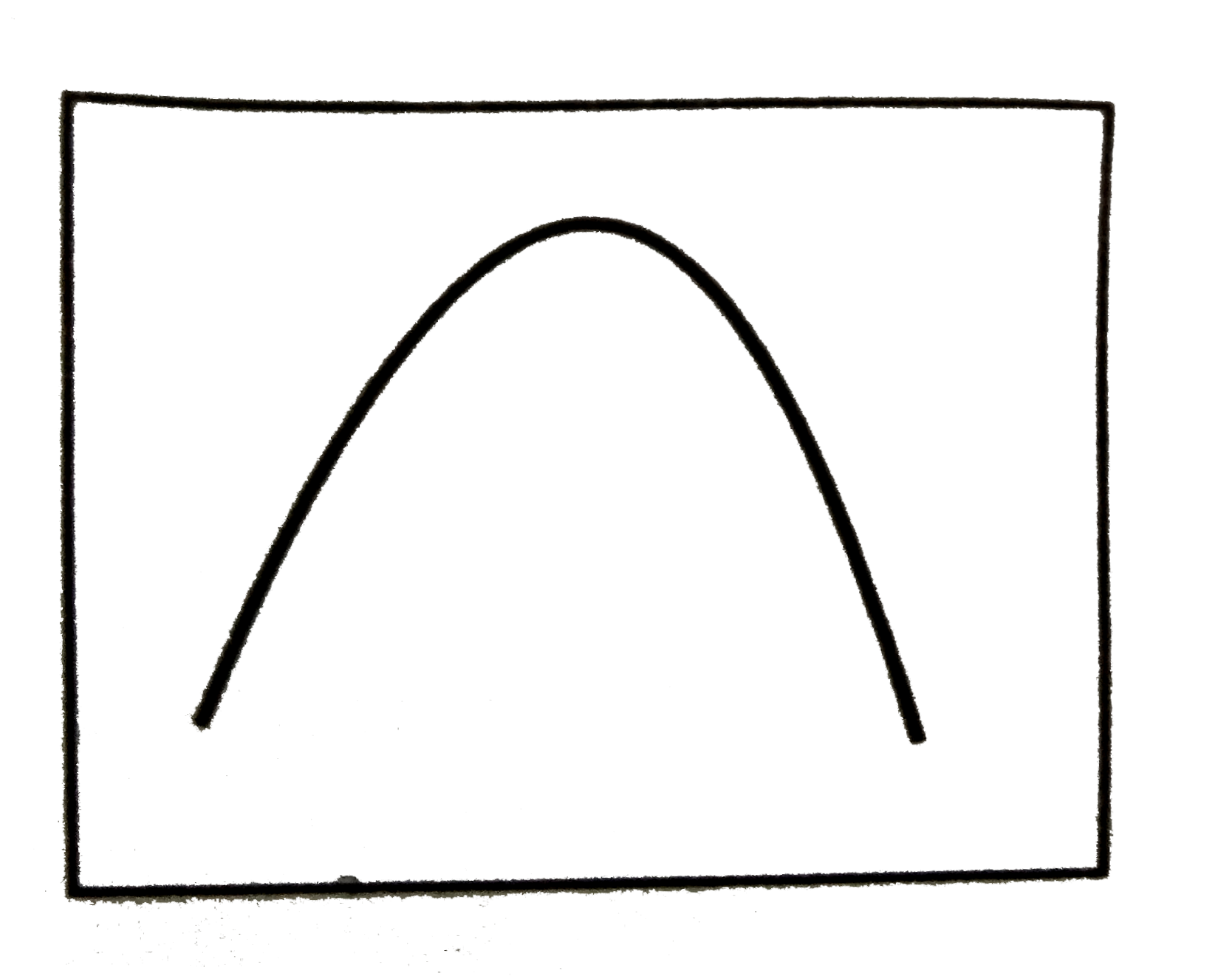 01:19View Solution
01:19View SolutionWhich one of the given graphs shows the effect of pH on the velocity of a typical enzymatic reaction (V) ?
01:25View SolutionWhich one of the given graphs shows the effect of temperature on the velocity of a typical enzymatic reaction ?
01:54View SolutionEnzymes are most functional within the temperature range of
01:10View SolutionWhich of the following graphs shows the relationship between the rate of an enzymatic activity and substrate concentration (S) ?
01:39View SolutionMichaelis Menten Constant `(K_(m))` is equal to
01:19View SolutionThe inhibitor which closely resembles the substrate in its molecular structure and inhibits the enzyme activity by biniding to the active site of the enzyme is called
01:58View Solutioninhibition of succinate dehydrogenase by malonate is an example of
02:07View SolutionThe inhibitor which does not resemble the substrate in structure and binds to the enzyme at site other than the active site is called
01:57View SolutionFeedback inhibition of an enzyme is influenced by
01:30View SolutionRefer to the given reactin.
`{:(C_(12)H_(22)O_(11)+H_(2)O overset(Enzyme A)to 2C_(6)H_(12)O_(6)),("Maltose"" ""Glucose"):}`
Enzyme A used in the reaction, belongs to which class of enzymes ?01:53View SolutionEnzymes that catalyse removal of groups from substrates by mechanisms other than hydrolysis, and addition of groups to double bonds, are called
01:37View SolutionDihydroxyacetone-3 phosphate and glyceraldehyde-3-phosphate are interconvertible. The enzyme responsible for this interconversion belongs to the cateogry of
02:27View SolutionWhich of the following is an example of isozyme ?
03:01View SolutionHoloenzyme is the complete enzyme consisting of an apoenzyme and a co-factor. Select the option that correctly identifies the nature of apoenzyme and co-factor.
01:34View SolutionThe proteinaceous molecule that joins a non-protein prosthetic group to form a functional enzyme, is called
01:38View SolutionRead the given paragraph with few blanks.
Prosthetic groups are `underline((i))` compunds distinguished from other co-factors in being `underline((ii))` bound to the apoenzyme. For example, in peroxidase and `underline((iii))` which catalyse the breakdown of hydrogen peroxide to water and `underline ((iv)),underline((v))` is the prosthetic group.
Select the option that correctly fills blanks in the above paragraph.02:44View SolutionCo-enzyme nicotinamide adenine dinucleotide (NAD) contains vitamin
01:25View SolutionZinc is a co-factor for proteolytic enzyme ______.
01:57View SolutionSelect the incorrect statement from the following.
01:35View SolutionRead the given statements and select the correct option.
Statement 1 : Co-factors play a crucial role in the catalytic activity of the enzyme.
Statement 2: Catalytic activity is lost when co-factor is removed from the enzyme.01:37View Solution
Biomolecules questions and complete solutions for chapter BIOMOLECULES of MTG BIOLOGY (HINGLISH) of Class 11
